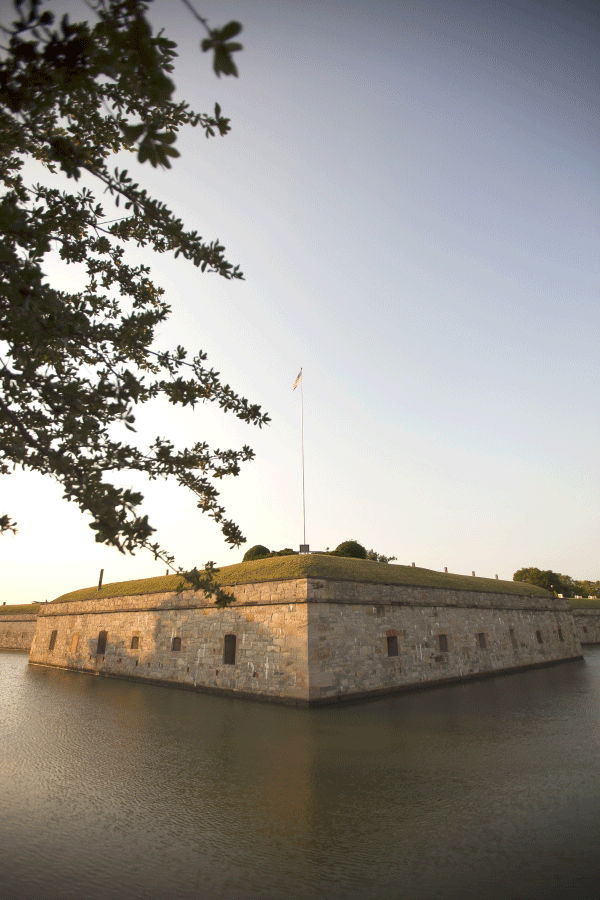From Butler to Big Bethel, Exploring Civil War History in Hampton
From Butler to Big Bethel, Exploring Civil War History in Hampton

Eloquently tucked between the Hampton Roads harbor and the Chesapeake Bay, Hampton is a historic city situated in the heart of Coastal Virginia. Established in 1610, Hampton, the oldest continuous English speaking settlement in America, has been on the forefront of some of the most riveting and important decisions in our nation’s history, altering our country’s landscape forever.
Never is that more prevalent than with the Civil War. From the “Contraband of War” decision to the Battle of Big Bethel (the first land battle of the Civil War) to the jailing of Confederate President Jefferson Davis in what is now the Casemate Museum at Fort Monroe National Monument, Hampton played a pivotal role in all aspects of the war.
When Virginia left the Union on April 17, 1861, Northern and Southern leaders alike recognized the Peninsula as an extremely strategic location. The Virginia Peninsula, bordered by the James and York rivers and the Chesapeake Bay, was one of three major approaches to the Confederate capital at Richmond. The port town of Hampton, the largest community on the Lower Peninsula, was in the path of the opposing armies, and would quickly become the scene of several significant events.
The Union’s ability to maintain control of Fort Monroe during the secession crisis provided the Federals with an important strategic footing in Confederate territory. Built on Old Point Comfort on the very tip of the Virginia Peninsula from 1819 to 1834, Fort Monroe was, and still is, the largest moat-encircled fortification in North America.
One of the most important decisions of the Civil War was made at Fort Monroe when Major Benjamin Butler, a brash and cunning northern lawyer, and newly assigned commander of the Union Department of Virginia, introduced the term “Contraband of War” and sent our divided nation into a frenzy.
In May 1861, three enslaved men, Shepard Mallory, James Townsend and Frank Baker, escaped to Fort Monroe seeking refuge. Their owner, Colonel Charles King Mallory of the 115th Virginia Militia, sent Major John Baytop Cary to retrieve his men, using the Fugitive Slave Law as justification. Butler, realizing that slavery was at the core of the conflict and that such laborers were being used to build nearby Confederate fortifications, rejected the request. Butler believed that since Virginia considered itself independent and was at war with the United States, he had no “constitutional obligation” to return the slaves. Butler added that his troops would take possession of whatever property they needed. Since slaves were considered “chattel property,” Butler called the escaped enslaved men “Contraband of War.”
The fort quickly became a magnet for those seeking freedom, and Butler began using them to support Union efforts. A contraband community was established outside Camp Hamilton known as “Slabtown.” The first schools for African Americans in the South were established by the American Missionary Association. Reverend C. L. Lockwood and local pre-war African American educator Mary Peake provided reading and other classes.
The first Civil War land battle in present day Virginia occurred at the Battle of Big Bethel. On June 6, 1861, Colonel John B. Magruder led 1500 men to Hampton from Yorktown to block key roads and isolate Fort Monroe. In retaliation, General Butler sent Genral Ebenzer W. Pierce leading seven infantry regiments (4400 men of the 4th Massachusetts, 1st Vermont, and 1st, 2nd, 3rd, 5th, and 7th New York) toward Big Bethel.
Meanwhile, Magruder was warned of Federal approach and prepared their defenses. On June 10, 1861, the Union troops arrived on the field of battle. The Duryea’s Zouaves made two piecemeal assaults against the Confederate fortifications. A third attack was supported by the 3rd New York. Because of a cannon malfunction, the Confederates were forced to abandon their one-gun battery.
Just as the Zouaves occupied the battery, a counter-attack organized by D. H. Hill recaptured this position. The battle now shifted east. Major Theodore Winthrop and Lt. Colonel Peter Washburn organized a final assault against the left flank of the main Confederate redoubt. The New England Battalion forded the creek; yet, their assault was repulsed. Winthrop was shot dead by Sam Ashe, an African American with the 1st North Carolina. Winthrop’s death ended the engagement and the Federals fell back beyond Newmarket Creek. The battle truly ended when Lieutenant John Greble was killed “nobly serving his gun.”
On April 9, 1865, General Robert E. Lee surrendered to General Ulysses S. Grant at Appomattox Courthouse, ending the four year war, though several battles took place over the coming weeks. Just a month later, on May 10, 1865, Confederate President Jefferson Davis was captured in Irwinville, Georgia and relocated to his new home, where he would remain prisoner for two years, Fort Monroe.
Housed in what is now the Casemate Museum at Fort Monroe National Monument, is the Jefferson Davis cell, featuring several artifacts from Davis’ time at the fort, including his shackles and original cell door. A casemate was specifically prepared to serve as his cell and strict precautions were taken to make sure Davis would not escape. He was chained and shackled on May 23, 1865, with the chains removed several days later because of his health. Davis was moved to better quarters in Carroll Hall and released on bail on May 13, 1867.
Be sure to check out Fort Monroe, Big Bethel Battlefield, the Casemate Museum, and other Civil War sites in Hampton. For more information, try www.visithampton.com.


